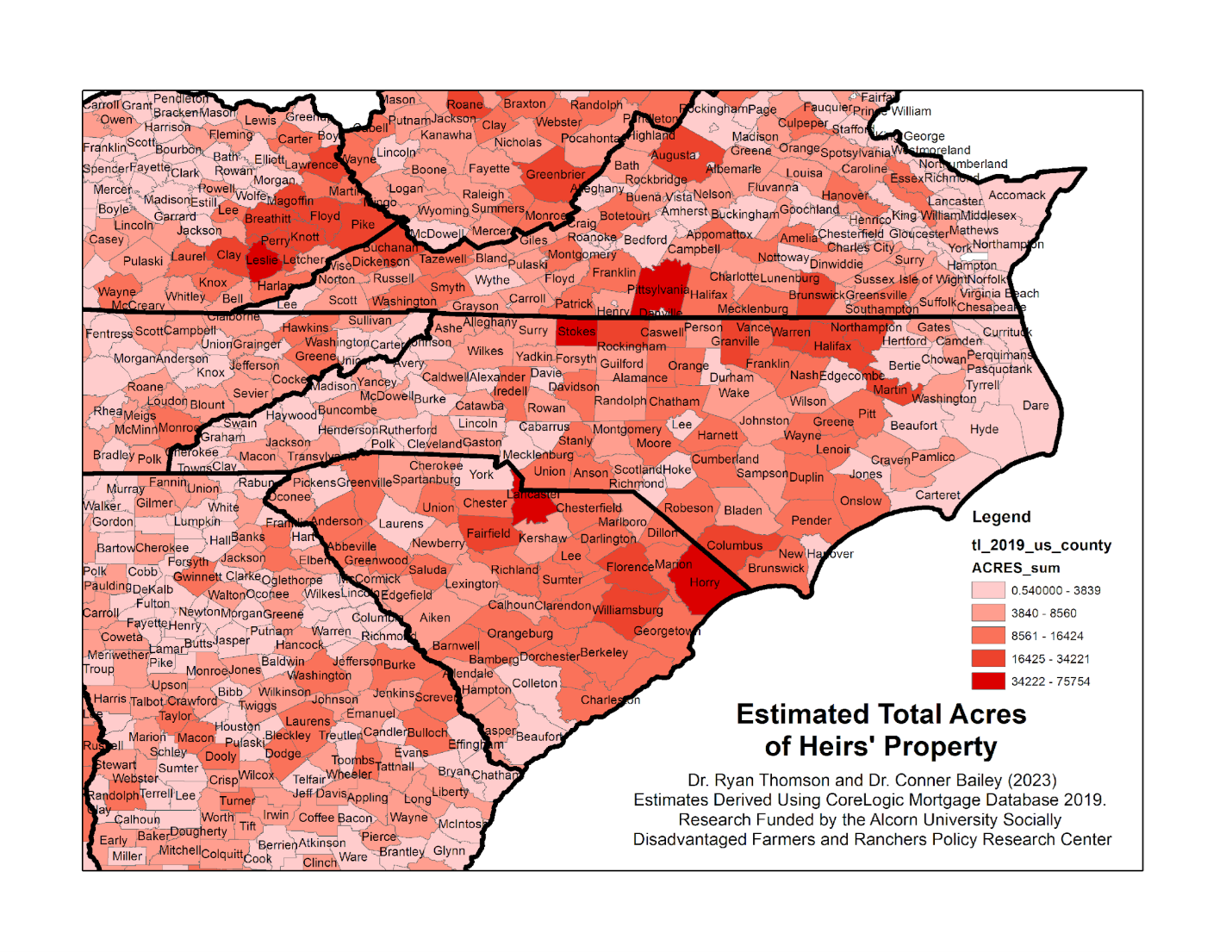Heirs Property Outreach
By Kurt Smith
North Carolina State University
A recent effort to assist and ameliorate the challenges of heirs’ property ownership in North Carolina was undertaken by North Carolina State University Forestry Extension and North Carolina Agricultural and Technical University (HBCU), through a grant provided through the USDA and Southern Rural Economic Development Center. The effort included, among other things, six workshops spread throughout the state in counties heavily populated with heirs’ property ownership. Workshop sites were selected using a map for medium to high acreage properties in heirs’ ownership, or where few efforts have been undertaken with heirs’ property landowners (See Map). The darker the shade of red the greater the number of heirs’ property parcels. The workshops were designed to help understand the vulnerabilities of heirs’ property ownership, as well as some of its historical ties to racial inequity in the south, but also to help owners develop strategies to manage or remove their property from heirs’ property ownership.
 A detailed survey was conducted at the close of the workshop, from these surveys of heirs’ property owners a number of interesting data points emerged. Most of our heirs’ property owners were older African American women. Not surprising since black women are twice as likely as white women to be leaders in their communities, and black households also have the highest share of households headed by women.
A detailed survey was conducted at the close of the workshop, from these surveys of heirs’ property owners a number of interesting data points emerged. Most of our heirs’ property owners were older African American women. Not surprising since black women are twice as likely as white women to be leaders in their communities, and black households also have the highest share of households headed by women.
Family unity was cited as the greatest challenge to remediating heirs’ property, followed by difficulty locating all of the heirs, and finally, a lack of funds to pursue legal remedies. Heirs’ property is often complicated in that in many cases the property would have hundreds if not thousands of identifiable heirs, all with a legal interest in the property. Clearing title to property like this can be a lengthy, stressful, emotional and complex legal process. It is often costly and challenging requiring both identifying and communicating with family, many who have moved out of the area. Common legal strategies to protect heirs’ property include creating a tenancy in common agreement, Limited Liability Corporations (LLC) or the formation or a trust.
One surprise, in that a significant number of heirs’ property owners wanted their property to remain as heirs’ property. This despite having conducted an entire workshop highlighting it as the most vulnerable and unstable form of ownership in the United States. Some of the reasoning given was family legacy and a desire that everyone associated with the family should have access to the property to learn, enjoy and celebrate the heritage that the land represents to the family. For many black families still able to trace their lineage to the property, it represents the first record of ownership after leaving slavery. Many heirs’ property owners also express difficulty in accessing cost share programs. It suggests more can and should be done to assist these landowners with removing barriers to cost share program participation.


 A detailed survey was conducted at the close of the workshop, from these surveys of heirs’ property owners a number of interesting data points emerged. Most of our heirs’ property owners were older African American women. Not surprising since black women are twice as likely as white women to be leaders in their communities, and black households also have the highest share of households headed by women.
A detailed survey was conducted at the close of the workshop, from these surveys of heirs’ property owners a number of interesting data points emerged. Most of our heirs’ property owners were older African American women. Not surprising since black women are twice as likely as white women to be leaders in their communities, and black households also have the highest share of households headed by women.